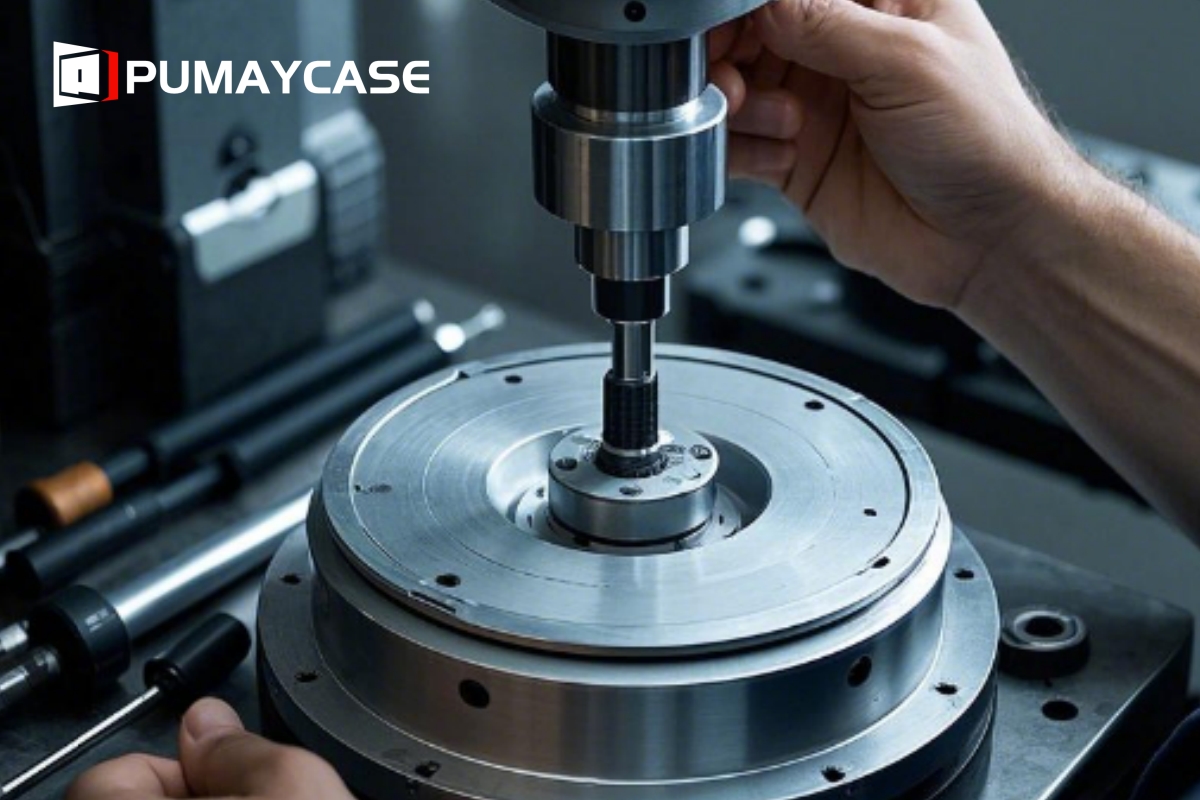Riveting is a common process used in the manufacturing of aluminum enclosures, offering a reliable and efficient way to join metal parts together. Understanding the riveting process can help ensure the durability and strength of the enclosure.
Riveting is a strong, versatile method used for joining aluminum parts in the production of enclosures, providing stability and lasting performance.
Let’s explore the riveting process in more detail and understand its importance in the manufacturing of aluminum enclosures.
What Is the Principle of Riveting?
Riveting is a mechanical process where two or more pieces of material are fastened together using a rivet. The rivet, a cylindrical pin with a head on one end, is inserted into a pre-drilled hole in the materials to be joined. The other end of the rivet is then deformed (usually by hammering or pressing) to create a second head, securing the materials together.
The principle of riveting involves the deformation of a rivet to create a permanent bond between materials, often used when welding or screwing isn't suitable.
Key Components of Riveting
- Rivet: A metal pin or cylindrical fastener with a head on one side.
- Rivet Gun or Hammer: A tool used to deform the rivet and form a second head to secure the materials.
- Materials to Be Joined: In aluminum enclosure manufacturing, these materials could be metal sheets or frames that need to be attached together.
| Component | Description |
|---|---|
| Rivet | A cylindrical fastener used to join materials |
| Rivet Gun/Hammer | Tool used to deform the rivet and secure materials |
| Materials | Aluminum sheets, panels, or frames to be joined |
What Is the Manufacturing Process for Rivets?
Rivets are typically manufactured using cold-heading machines, where the metal wire is cut, heated, and formed into the desired shape. The specific process for making rivets may vary based on their type (e.g., solid, blind, or tubular rivets), but generally follows a few key stages:
The manufacturing of rivets involves a series of steps to form the rivet body, shape its head, and prepare it for installation.
Stages in Rivet Manufacturing
-
Material Preparation:
Rivets are often made from steel, aluminum, or copper, and the raw material is typically supplied in wire form. -
Cold Heading:
The wire is fed into a cold-heading machine that applies pressure to shape the rivet body. The first head is formed during this process. -
Shaping the Rivet:
The rivet is further shaped to the desired dimensions, and the second head (or flange) is formed by additional pressure or hammering. -
Finishing and Coating:
Rivets are then finished by trimming any excess material and applying coatings to prevent corrosion, especially when used in outdoor or harsh environments.
| Stage | Description |
|---|---|
| Material Preparation | Raw wire material is prepared for shaping |
| Cold Heading | Rivet is shaped using cold-heading machines |
| Shaping the Rivet | Forming the heads and defining dimensions |
| Finishing and Coating | Rivet is trimmed and coated to prevent corrosion |
How Do You Rivet Step by Step?
Riveting is a straightforward process, but it requires careful execution to ensure the strength and integrity of the joint. Here's how to rivet step by step:
The riveting process is simple but requires precision to create strong, secure bonds between materials.
Step-by-Step Guide to Riveting
-
Prepare the Materials:
Begin by aligning the materials you want to join. Drill appropriate-sized holes in the materials for the rivets. -
Insert the Rivet:
Place the rivet into the hole, ensuring the head is on the outside of the materials. -
Set Up the Rivet Gun:
If using a rivet gun, load the rivet into the gun. For manual riveting, ensure the hammer and tools are ready. -
Rivet the Material:
For rivet guns, squeeze the handle to compress the rivet, causing it to deform and secure the materials. If using a hammer, use controlled strikes to shape the rivet’s opposite end and secure the joint. -
Check the Rivet:
Once the rivet is deformed, inspect it to ensure it is properly set. The rivet should be flush with the material surface, and the joint should be tight.
| Step | Description |
|---|---|
| Prepare Materials | Drill holes and align materials to be joined |
| Insert Rivet | Place the rivet in the pre-drilled hole |
| Set Up Rivet Gun | Prepare the riveting gun or hammer for use |
| Rivet the Material | Deform the rivet using the gun or hammer |
| Check the Rivet | Ensure the rivet is properly deformed and secure |
Is Riveting Stronger Than Welding?
Riveting and welding are both strong methods of joining materials, but they have different advantages depending on the application.
Riveting may offer a better solution in some cases, especially when dealing with materials like aluminum that may not be suitable for welding.
Comparing Riveting and Welding
-
Riveting:
- Ideal for materials that are difficult to weld, like thin aluminum.
- Offers strong, secure bonds that can withstand vibrations.
- Does not require high temperatures, making it suitable for heat-sensitive materials.
- Can be used in environments where welding would be impractical (e.g., high-altitude or confined spaces).
-
Welding:
- Provides a permanent bond, often stronger than a riveted joint in certain conditions.
- Ideal for thicker materials.
- Requires more preparation and specialized equipment.
- Heat generated during welding can distort materials, especially thin metals like aluminum.
| Process | Strength | Applications | Pros |
|---|---|---|---|
| Riveting | Strong in vibration-heavy conditions | Thin metals, heat-sensitive materials | No heat required, ideal for thin materials |
| Welding | Generally stronger than riveting | Thick metals, high-stress environments | Permanent, ideal for thicker materials |
How to Rivet with a Hammer?
Riveting with a hammer is a manual method that requires skill and precision. This technique is often used in smaller or more controlled environments where machinery is not available.
Riveting with a hammer provides a more hands-on approach, ideal for smaller-scale or low-volume production.
Steps for Riveting with a Hammer
-
Align the Materials:
Align the pieces of aluminum that need to be joined and drill a hole for the rivet. -
Insert the Rivet:
Place the rivet in the hole, ensuring the head is on the outside. The rivet should fit snugly. -
Strike the Rivet:
Using a hammer, strike the tail end of the rivet repeatedly. This will deform the tail, forming a second head that secures the materials together. -
Check the Rivet:
After riveting, ensure the rivet is properly deformed and flush with the material surface. The materials should be firmly held together with no gaps or looseness.
| Step | Description |
|---|---|
| Align Materials | Align the materials and drill holes |
| Insert Rivet | Place the rivet in the hole |
| Strike the Rivet | Use a hammer to deform the rivet |
| Check the Rivet | Ensure the rivet is securely set |
Riveting is a reliable and efficient process in aluminum enclosure manufacturing, offering strength, durability, and ease of use. Whether you are riveting manually with a hammer or using a rivet gun, understanding the process and choosing the right type of rivet ensures your enclosures are secure and long-lasting.



